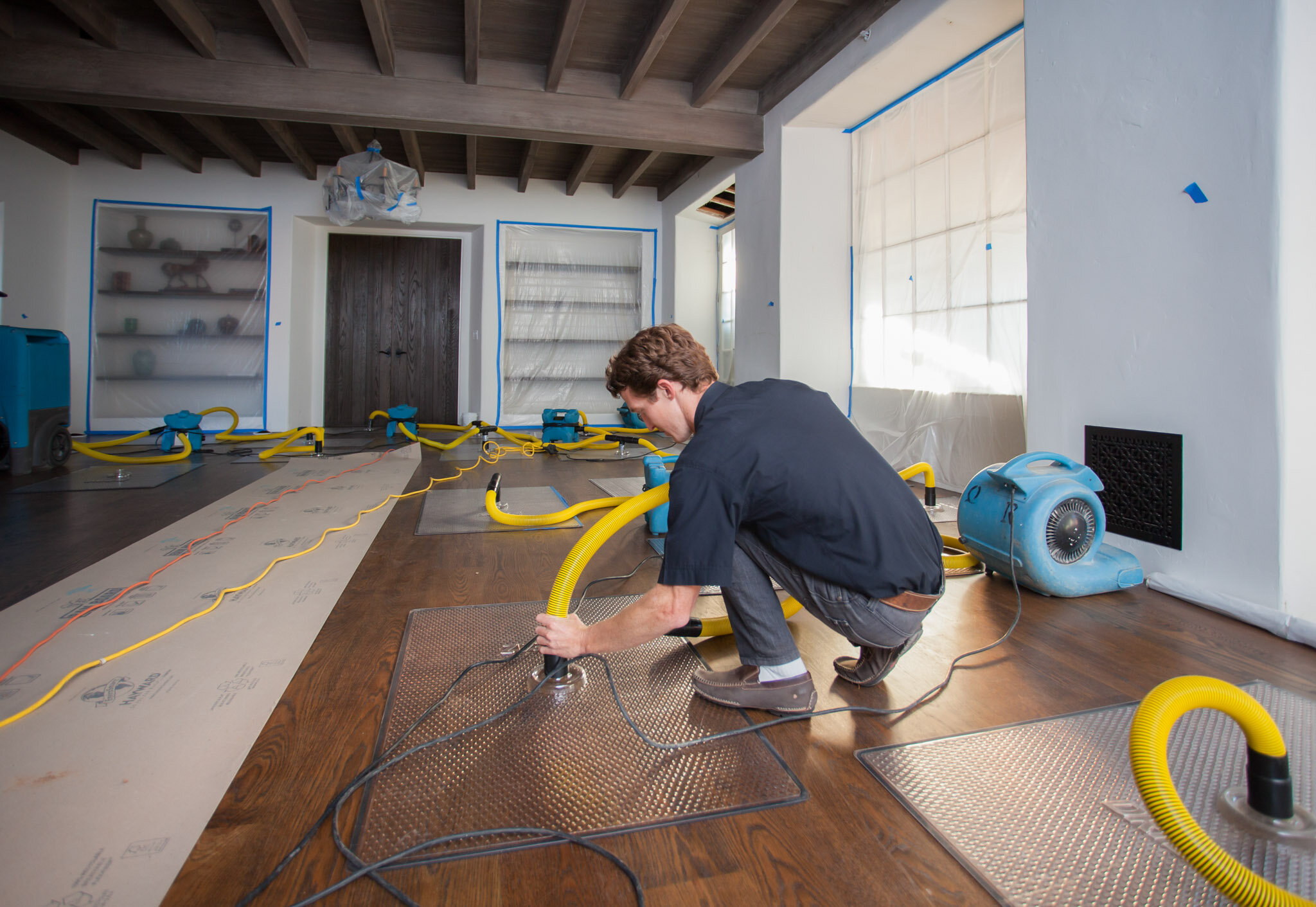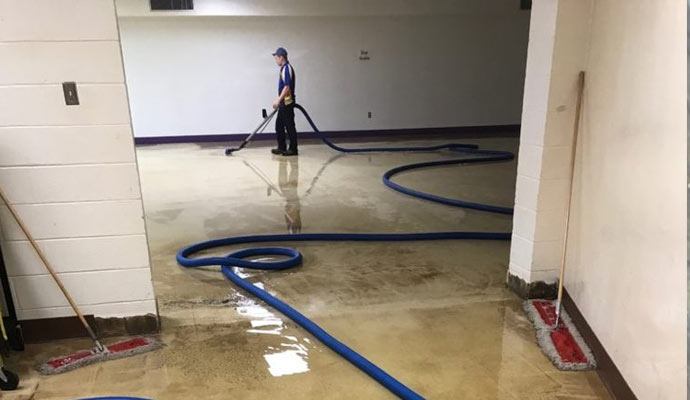Top reasons homeowners prefer Flood Cleanup Services after water incidents
Wiki Article
Water Damage Restoration 101: Understanding the Process and Price
Water damage can strike suddenly, leaving home owners in a state of confusion. Comprehending the remediation process is crucial for reliable recuperation. From assessing the damage to choosing the appropriate provider, each step affects the overall end result and expense. Variables such as the sort of water damage and necessity likewise play a significant function. What are the details methods made use of in remediation, and just how can one prepare for prospective expenditures?Types of Water Damage

Initial Assessment and Inspection

Water Removal Methods
Following the first analysis, effective water extraction techniques are used to mitigate damage and avoid additional problems. These techniques include making use of specialized equipment such as submersible pumps and industrial-grade vacuum cleaners - Water Extraction And Drying. The option of technique depends upon the volume of water present and the sort of materials impacted. For standing water, submersible pumps are commonly made use of for fast removal, while vacuum cleaners are excellent for extracting water from rugs and upholstery. In addition, progressed approaches like water extraction mats might be utilized for hard-to-reach areas - Water Damage Restoration. The objective is to eliminate as much water as feasible, decreasing the capacity for mold and mildew development and structural damage. Trigger and efficient water removal is vital in the total water damage restoration processDrying and Dehumidification Process
When the water removal is full, the drying out and dehumidification process becomes important to bring back the afflicted location. This phase generally utilizes industrial-grade dehumidifiers and air movers to successfully minimize wetness degrees. The dehumidifiers pull in moist air, removing excess humidity, while air moving companies flow air to accelerate dissipation. Tracking devices is frequently made use of to track humidity and temperature level degrees, making sure suitable drying out problems. The duration of this process can vary depending on the degree of the water damage and ecological aspects. It is necessary to extensively completely dry all impacted materials, including wall surfaces, floor covering, and home furnishings, to avoid mold growth and architectural damage. Correct implementation of this step is vital for a successful restoration outcome.Cleansing and Sanitizing Damaged Locations
Once the drying process is total, a detailed initial assessment and evaluation of impacted locations is crucial to recognize contamination levels. Reliable cleaning techniques and proper products should then be used to get rid of particles and stains. Ultimately, sanitization and disinfection approaches are necessary to guarantee that hazardous microorganisms are gotten rid of, recovering the space to a secure conditionPreliminary Assessment and Examination
Before beginning any kind of remediation initiatives, a comprehensive initial analysis and assessment of the affected locations are essential for effective cleansing and sanitizing. This process includes determining the extent of water damage, figuring out the resource of the water breach, and examining the materials influenced. Inspectors generally try to find signs of mold and mildew growth, architectural stability issues, and damaged personal belongings. The assessment likewise includes examining moisture levels making use of specific equipment to assure no concealed water pockets remain, as these can cause more problems. Recording the findings is essential for preparing the following action in the reconstruction process. A thorough initial evaluation makes it possible for reconstruction experts to develop a targeted method for efficient cleansing and disinfecting, ultimately minimizing damage and health risks.Cleaning Up Methods and Products
Efficient cleaning and sanitizing of water-damaged locations need a range of techniques and items customized to the details products influenced. For permeable surface areas like drywall and carpets, extraction methods are necessary to get rid of excess dampness, adhered to by deep cleansing with specialized cleaning agents. Non-porous products such as ceramic tile or steel can be cleaned up making use of commercial-grade cleansers that effectively eliminate impurities. Vapor cleansing is an additional reliable method, particularly for carpetings and furniture, as it utilizes heats to get rid of bacteria and mold (Flood Cleanup Services). In addition, green items are significantly popular for their security and efficiency - Water Damage Restoration. Inevitably, picking the appropriate cleansing techniques and items not just guarantees prompt tidiness however likewise help in protecting against more damage and health hazards connected with water breachSanitization and Disinfection Techniques
When attending to water damage, proper sanitization and disinfection techniques are important to guarantee the security and wellness of the affected atmosphere. After first cleaning, surfaces need to be treated with ideal disinfectants to get rid of microorganisms, mold and mildew, and bacteria that prosper in moist problems. Typical approaches include using EPA-approved chemical anti-bacterials, which can be used with spraying or cleaning strategies. Additionally, ultraviolet (UV) light systems can successfully sanitize areas by reducing the effects of bacteria without harsh chemicals. The option of approach typically depends on the kind of products affected and the extent of contamination. Ultimately, complete sanitization not just recovers a safe space however additionally helps prevent future health dangers related to lingering moisture and mold growth.
Repair Work and Restoration Options
Examining the damage triggered by water exposure is crucial for determining the suitable repair services and restoration options. House owners might encounter various problems, including damaged drywall, warped floor covering, and compromised structural aspects. Depending on the degree of the damage, repair services may involve changing areas of drywall, mounting brand-new flooring, or strengthening structural beams. In instances of extreme damage, full replacement of afflicted materials may be essential. In addition, specialist conservators frequently recommend using moisture meters to evaluate hidden dampness degrees before picking the very best course of action. It is very important to act quickly to avoid mold growth and additional degeneration. Selecting the ideal choices not only restores the home however likewise ensures long-term safety and capability.Aspects Influencing Restoration Costs

The extent of water damage straight affects the restoration costs house owners can anticipate to incur. Elements such as the source of the water, the period of best site direct exposure, and the damaged materials significantly influence prices. Clean water damage from a damaged pipe is normally much less expensive to restore contrasted to damage created by sewage. Furthermore, the degree of contamination dictates the requirement for specialized cleansing and disposal services, further enhancing expenditures. Geographical location likewise contributes, as local labor rates and schedule of remediation solutions can differ. Lastly, the seriousness of the action influences expenses; quicker interventions typically result in reduce general costs by protecting against further damage. Understanding these factors is essential for home owners when estimating repair expenses.
The 3 key kinds of water damage are classified based on contamination degrees: tidy water, gray water, and black water. An extensive preliminary evaluation and assessment are important steps in the water damage remediation process. For standing water, completely submersible pumps are commonly made use of for rapid removal, while vacuums are ideal for removing water from carpetings and upholstery. The extent of water damage straight affects the repair costs house owners can expect to sustain. Clean water damage from a damaged pipe is generally less costly to restore compared to damage created by sewage.
Report this wiki page